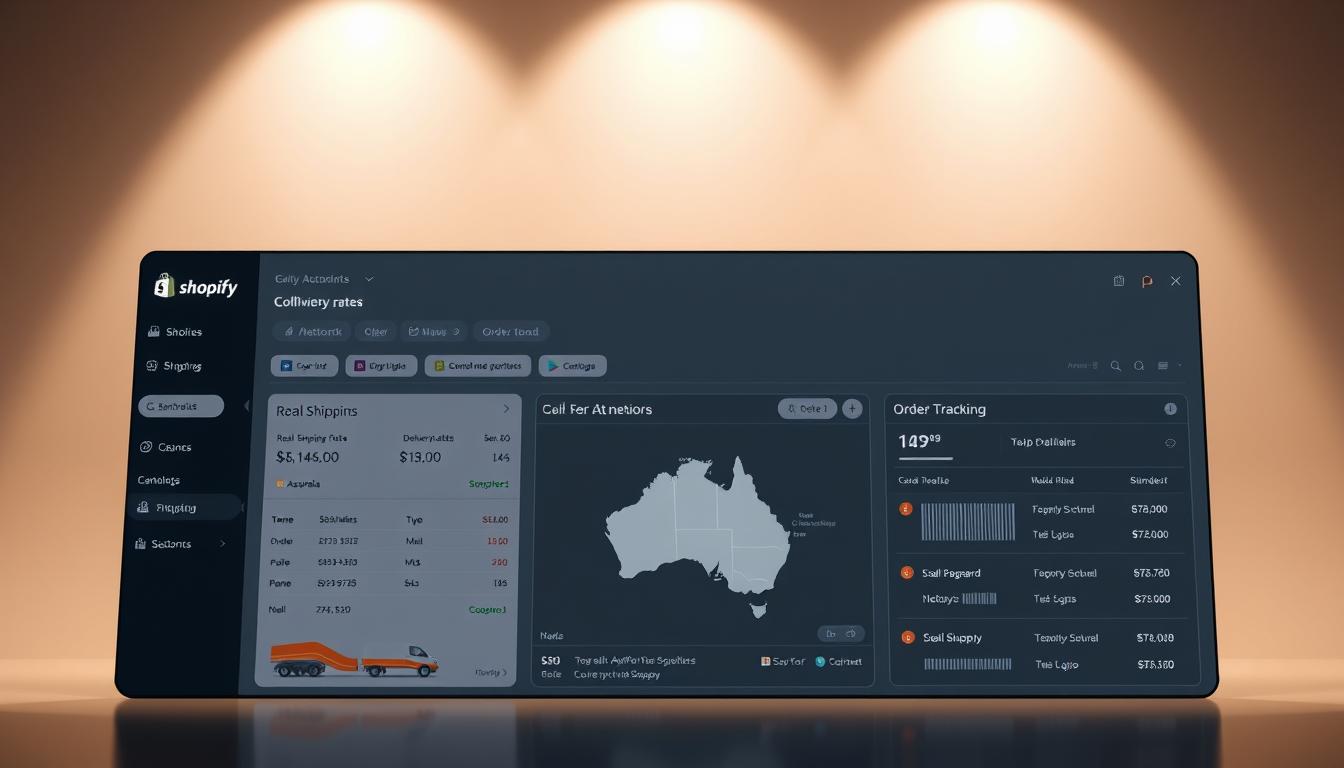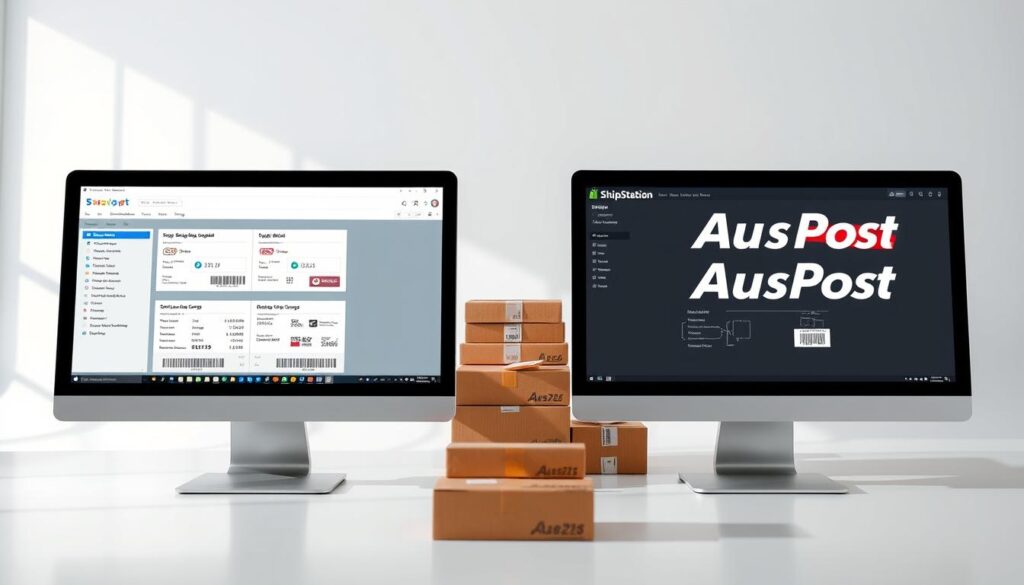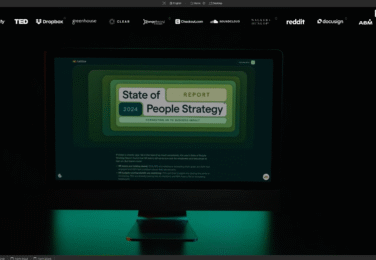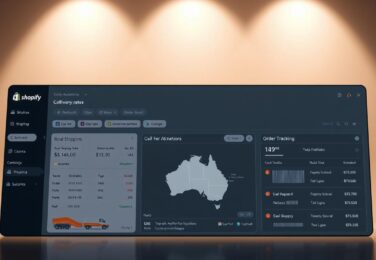Can I integrate local shipping providers with an online store platform?

Table of Content
Australian retailers often ask if they can link local shipping providers with their online stores. They’ve set up their stores and products are ready. But, they’re stuck on a big decision that impacts every single order.
The answer is yes, you can definitely link local shipping providers with your ecommerce platform. Australian retailers have great options for making shipping easier and reducing manual work.
The real question isn’t if you can integrate. It’s about finding the best solution for your business.
We’ve looked into the two top choices for Australian online shops: shipping software and direct postal service integrations. Both have strong features but fit different business needs and ways of working.
In this guide, we’ll explore the technical features, costs, and how these solutions perform in real life. We aim to give you practical insights from Australian businesses who’ve made these choices.
Whether you send a few parcels a week or hundreds, we’ll show you which way to go. We’ll help you find the best strategy for efficiency and customer satisfaction.
Key Takeaways
- Australian online stores can integrate local shipping providers directly with ecommerce platforms through multiple integration options
- Both enterprise shipping software and direct postal service integrations offer automated label printing and tracking capabilities
- Your business volume and operational complexity determine which shipping integration delivers better value
- Integration costs vary significantly between solutions, affecting your overall shipping budget and profitability
- Real-world case studies from Australian retailers provide practical insights into performance differences between shipping platforms
- Technical setup requirements differ substantially, impacting implementation time and ongoing management effort
- Understanding your specific shipping workflow needs helps identify the most efficient integration solution for your business
1. The Shipping Challenge Facing Australian Online Retailers
We’ve worked with hundreds of Australian online stores. Shipping complexity is a big issue. It can make or break your success.
The right shipping strategy can be a big advantage. We’ll look at why Australian retailers face unique challenges and how to solve them.
Understanding the Australian Ecommerce Shipping Landscape
Australia’s big distances make shipping expensive. This is a big part of your costs.
Customers want fast, cheap delivery with tracking. They compare you to big names like Amazon.
Australia needs good ecommerce shipping solutions australia that don’t cost too much. But, it’s hard to balance prices for city and country areas.
Three key things shape the current market:
- Distance and delivery timeframes: Shipping from Sydney to Perth is much longer than in Europe or the US
- Carrier concentration: Australia Post is big, but new options are coming
- Customer price sensitivity: Shoppers expect good rates despite the distance
Why Seamless Local Shipping Integration Matters for Your Bottom Line
Bad shipping integration can hurt your profits. It can cost thousands of dollars a year.
Disconnected systems can be costly. Manual errors, delays, and returns can waste time and money.
Good auspost shipping integration and multi-carrier solutions save money:
- Reduced labour costs: Automation saves time for your team
- Fewer shipping errors: Direct integration cuts down on mistakes
- Better carrier rates: You can get better deals with proper integration
- Improved customer retention: Accurate tracking and updates keep customers happy
By fixing integration, retailers can improve a lot. A Melbourne boutique cut their fulfilment time by 67% with better carrier integration. Their shipping complaints almost disappeared in three months.
Common Pain Points in Order Fulfilment
Australian retailers face the same shipping problems. These get worse during busy times like Click Frenzy and Christmas.
The main issues include:
- Time-consuming label creation: Making shipping labels manually wastes hours
- Multi-channel chaos: Managing orders across different platforms is confusing
- Limited automation capabilities: Repetitive tasks take up too much staff time
- Inadequate carrier options: Using only one carrier limits your choices
- Checkout delivery estimates: Accurate shipping costs and times are hard to provide
- Returns management complexity: Handling returns is hard without the right tools
These problems get worse during busy times. We’ve seen retailers lose sales because they can’t keep up. Others lose customers because of bad shipping updates.
But, there’s a solution. Modern ecommerce shipping solutions australia can fix these problems. Auspost shipping integration and multi-carrier platforms make things easier.
Knowing these challenges helps find the right solutions. Next, we’ll look at how Australia Post’s tools and platforms help solve these issues.
2. Australia Post Business Shipping Solutions Explained
Choosing the right shipping infrastructure starts with understanding what Australia Post’s business solutions actually deliver. We’ve worked with dozens of online retailers who initially felt overwhelmed by the various auspost business shipping options available. The good news is that once you understand the core components, the decision becomes much clearer.
Australia Post has developed several specialised tools for business customers managing regular shipment volumes. These solutions range from simple web-based portals to sophisticated integrations that connect directly with your ecommerce platform. Each option serves different business needs and scales differently as your order volume grows.
AusPost eParcel and MyPost Business Features
The eParcel service represents Australia Post’s primary business-to-consumer parcel delivery solution. This service is designed for online retailers shipping products to customers across Australia. Unlike standard parcel post services, eParcel provides enhanced tracking, delivery notifications, and proof of delivery for business accountability.
MyPost Business serves as the central management platform for business shipping operations. We’ve found this online postage software australia solution offers substantial time savings compared to visiting post offices for each shipment. The platform lets you manage multiple sender addresses, which proves invaluable if you operate from different warehouse locations or use dropshipping arrangements.
The MyPost Business dashboard provides several key capabilities that streamline daily operations:
- Bulk upload functionality for processing multiple orders simultaneously
- Address validation tools that reduce delivery failures and returns
- Shipment history tracking for customer service inquiries
- Customisable default settings that speed up repetitive shipping tasks
- Invoice management and payment tracking for accounting purposes
Direct Shipping Portal Capabilities
The web-based shipping portal gives you direct access to create and manage shipments without third-party software. You simply log into your business account, enter shipment details, and generate shipping labels that you can print directly from your browser. This approach works well for businesses processing fewer than 50 orders daily.
We appreciate the portal’s flexibility for handling irregular shipments that don’t fit standard automation rules. When you need to send a replacement item with special instructions or process an urgent order outside your normal workflow, the portal provides quick access without disrupting your automated systems.
The portal also includes reporting features that help you analyse shipping patterns. You can review spending by service type, identify your most common delivery destinations, and track how many parcels required redirection. These insights prove valuable when negotiating volume discounts or planning inventory distribution.
Australia Post offers several service tiers that balance speed against cost. Understanding which option suits different order types directly impacts both customer satisfaction and your shipping budget. We’ve seen retailers reduce costs by 15-20% simply by matching service levels more strategically to customer expectations.
Express Post provides next-business-day delivery to most metropolitan areas and two-to-three-day delivery to regional locations. This premium service includes tracking, signature on delivery options, and compensation coverage up to $100. We recommend Express Post for high-value items, time-sensitive orders, or when competing against retailers who offer fast shipping.
Standard Parcel Post represents the most economical option for non-urgent deliveries. Delivery timeframes range from two to eight business days depending on the destination. This service includes basic tracking but without guaranteed delivery windows. Many successful online stores use Standard Parcel Post as their default option while providing Express as a paid upgrade at checkout.
Parcel Lockers expand your delivery capabilities beyond traditional home delivery. These secure collection points let customers collect parcels at their convenience, which significantly reduces failed delivery attempts. We’ve observed that using Parcel Locker delivery can decrease “where is my order” customer service inquiries by up to 30%.
Native Ecommerce Platform Integrations
Australia Post has developed direct integrations for major ecommerce platforms that eliminate manual data entry. These native connections automatically pull order information from your online store and create corresponding shipments in the AusPost system. The integration handles address formatting, service selection, and label generation without requiring you to switch between systems.
The Shopify integration represents one of the most mature implementations. Once configured, it displays real-time shipping rates during checkout based on the customer’s delivery address. After a customer completes their purchase, the order flows directly into your shipping workflow. You can then generate labels individually or in batches, with tracking information automatically updating in your Shopify admin and customer notifications.
WooCommerce and BigCommerce connections operate in a similar manner but require slightly more technical setup. We usually allocate two to three hours for proper implementation, including testing various shipping scenarios to ensure accurate rate calculations. The investment pays dividends through reduced manual processing time and fewer shipping errors.
These native integrations work best for businesses using Australia Post as their primary or exclusive shipping carrier. If you ship exclusively through AusPost and process moderate order volumes, the native integration provides everything you need without additional subscription costs. The limitation becomes apparent when you want to compare rates across multiple carriers or implement complex shipping rules.
AusPost Business Shipping Pricing Structure
Understanding the true cost of auspost business shipping options requires looking beyond the basic per-parcel rates. Australia Post structures business pricing across several components, and we’ve seen new business customers surprised by charges they didn’t anticipate during planning stages.
The foundation starts with a business account, which carries no monthly fees but requires registration and ABN verification. Once approved, you access business rates that typically offer 5-10% discounts compared to retail counter pricing. These base discounts apply automatically to all shipments processed through your business account.
Volume-based discounts provide additional savings as your monthly shipment count increases. Australia Post evaluates your shipping history quarterly and may offer enhanced rates if you consistently meet volume thresholds. We’ve helped clients negotiate discounts reaching 15-25% by demonstrating consistent monthly volumes above 500 parcels.
| Monthly Parcel Volume | Typical Discount Range | Additional Benefits |
|---|---|---|
| 1-100 parcels | 5-8% off retail rates | Basic business account features |
| 101-500 parcels | 10-15% off retail rates | Dedicated account manager contact |
| 501-2000 parcels | 15-20% off retail rates | Custom pricing review, priority support |
| 2000+ parcels | 20-25% off retail rates | Tailored solutions, quarterly business reviews |
Additional service charges apply for premium features like signature on delivery, Saturday delivery, or transit cover exceeding the standard $100 limit. These extras typically cost between $2.50 and $8.00 per shipment depending on the service. We recommend evaluating which percentage of your orders genuinely require these enhancements versus including them by default.
Payment terms for business accounts typically operate on a post-payment basis after you establish credit approval. You ship throughout the month and receive consolidated invoicing, which helps with cash flow management compared to prepaying for each shipment. This online postage software australia approach simplifies accounting and provides clearer visibility into monthly shipping expenses.
3. ShipStation Australia: Platform Capabilities and Benefits
After months of testing, we’ve found out what makes ShipStation stand out. It’s a shipping management software that works differently from direct carrier integrations. Instead of sticking to one provider, ShipStation acts as a central hub for all your shipping needs.
We’ve tested ShipStation with hundreds of orders to see how it performs in real life. The results show why more Australian retailers choose ShipStation over carrier-specific solutions. It tackles shipping challenges that single-carrier integrations can’t handle.
ShipStation Core Platform Overview
ShipStation is more than just another carrier integration. It’s a comprehensive shipping management solution for growing businesses. It brings together multiple carriers, sales channels, and automation tools in one place.
The Australian version includes local features that international platforms often miss. You’ll find Australian carriers prioritised, prices in Australian dollars, and customer support during Australian hours. These details are important when you’re dealing with urgent shipping issues.
What impressed us most was how quickly you can start using the platform. Unlike complex systems that take weeks to learn, most users can start shipping within hours.
Cloud-Based Shipping Management System
ShipStation works through your web browser, avoiding software installation issues. We tested it on different devices and locations to ensure flexibility. Your team can manage orders from anywhere with internet access.
The cloud-based system also means automatic updates and improvements without your effort. When ShipStation adds new features, they’re available in your account right away. You never have to worry about outdated software or missing updates.
This approach also keeps your shipping data safe and accessible. We’ve seen businesses lose weeks of shipping records due to computer crashes. Cloud-based systems prevent this by automatically backing up and storing data redundantly.
The platform’s multi-carrier capability is its biggest advantage. While AusPost integrations connect you to one carrier, ShipStation gives you access to Australia’s entire shipping network. We’ve mapped out the major carriers supported for Australian businesses:
| Carrier Category | Supported Providers | Primary Use Cases |
|---|---|---|
| National Post | Australia Post, MyPost Business | Standard parcels, express delivery, international shipping |
| Alternative Couriers | Sendle, CouriersPlease, Fastway | Cost-effective alternatives, carbon-neutral options |
| Freight Services | TNT, Aramex, DHL | Bulky items, business-to-business deliveries |
| Specialty Options | Hunter Express, Allied Express | Regional coverage, specific delivery requirements |
This carrier diversity lets you choose the best service for each shipment. During testing, we found significant cost savings by using Sendle for lightweight parcels and AusPost for urgent deliveries.
The platform keeps carrier rates and service levels up to date automatically. You don’t have to manually update shipping tables or discover rate changes after the fact. ShipStation pulls live rates from each carrier, ensuring accurate shipping costs every time.
Multi-Channel Order Consolidation Features
Managing orders across multiple sales channels used to mean logging into different platforms. We’ve seen retailers waste hours switching between platforms. ShipStation eliminates this by pulling all orders into a single queue.
The platform connects directly to major ecommerce platforms and marketplaces:
- Shopify, WooCommerce, BigCommerce, and Magento stores
- eBay Australia listings and eBay International sales
- Amazon Australia marketplace orders
- Catch.com.au and other Australian marketplaces
- Custom integrations through API connections
We configured connections to multiple channels at once. Orders appeared in ShipStation within minutes of customers completing checkout. This speed is critical for achieving same-day dispatch commitments.
The consolidated view shows order details, customer information, and product specifications, regardless of where the sale originated. You process an eBay order using the same workflow as a Shopify sale. This consistency dramatically reduces training time and processing errors across your fulfilment team.
We appreciated the custom views and filters available. You can create saved searches showing only unshipped orders over $100, or orders containing specific products, or shipments heading to particular postcodes. These filters help prioritise your processing workflow based on business rules that matter to you.
Automation Rules and Workflow Optimisation
The automation capabilities of ShipStation truly set it apart from basic carrier integrations. We’ve set up dozens of automation rules to understand what’s possible. The results show significant time savings once you’ve established your preferred workflows.
Automation rules work by triggering actions when orders meet specific conditions. You define the conditions and actions once, then ShipStation applies them automatically to every matching order. Here are the automation rules Australian businesses find most valuable:
- Carrier Selection by Weight: Automatically assign Sendle for packages under 5kg and AusPost for heavier items, optimising shipping costs without manual decisions
- Service Level by Order Value: Route high-value orders to express services while standard orders use regular post, ensuring priority customers receive premium treatment
- Regional Carrier Assignment: Direct metro orders to one carrier and regional deliveries to another based on postcode, leveraging each carrier’s strengths
- Product-Based Packaging: Apply preset package dimensions when orders contain specific products, eliminating measurement time for standard items
- Customer Notification Triggers: Send tracking emails immediately after label creation, keeping customers informed without manual intervention
We tested a workflow combining multiple rules for a typical fashion retailer. Orders under $50 automatically received standard shipping labels with Sendle. Orders over $50 triggered AusPost Express labels. Orders containing sale items added a “Thank You” promotional insert. The entire ruleset executed in seconds per order.
The platform also supports tag-based automation, which proved incredibly useful during testing. You can tag orders in your ecommerce platform (like marking wholesale customers or VIP clients), and ShipStation responds with specific handling rules. Wholesale orders might skip gift messaging while VIP customers always receive express shipping.
Batch processing is another efficiency gain. Instead of creating labels one-by-one, you select multiple orders and generate all labels simultaneously. We processed batches of 50 orders in the time previously required for 10 individual shipments. This capability becomes essential as your order volume grows beyond 20-30 daily shipments.
The learning curve for automation does require investment. We recommend starting with one or two simple rules, then gradually adding complexity as you understand the system. ShipStation provides preset templates for common automation scenarios, which accelerates this learning process considerably.
4. ShipStation VS AusPost: Direct Feature Comparison
We’ve compared ShipStation and AusPost side-by-side. This helps you see what each offers for daily tasks. Knowing these differences helps pick the right tool for your business.
AusPost and ShipStation help Australian retailers manage shipping. AusPost works directly with their services. ShipStation, on the other hand, supports many carriers and has lots of automation.
Shipping Label Generation Tools and Efficiency
How you make shipping labels affects your order speed. AusPost’s MyPost Business makes labels easily through a simple interface.
ShipStation focuses on speed and volume. It combines orders from different places into one place. You can see pending shipments, apply filters, and make labels without switching systems.
Bulk Label Printing Capabilities
Handling many orders at once is key during busy times. AusPost’s portal lets you print labels in batches but needs more steps. You pick orders or use basic filters before making labels in groups.
ShipStation is great for bulk printing with advanced tools. You can filter orders by date, product, destination, or tags. With one click, it makes all labels and marks orders as shipped. It can split shipments by carrier or service level.
This is very helpful during sales or busy seasons. Retailers with lots of daily orders save a lot of time with these features.
Label Customisation Options
Both platforms let you add your brand to labels. AusPost lets you add your logo and return address. But, the label format is fixed.
ShipStation offers lots of customisation options. You can make different label templates for different situations. It also lets you customise packing slips with product images and messages.
You can change label sizes, choose printing types, and decide what to show on each document. This helps keep your brand consistent everywhere.

Order Automation and Batch Processing
Manual order handling takes up time that could grow your business. ShipStation and AusPost have big differences in automation. AusPost needs more manual steps for each shipment.
AusPost requires logging into the portal, manually checking orders, and choosing shipping services. It doesn’t automatically apply rules based on order details. This works for small businesses but gets slow as volumes grow.
ShipStation’s automation makes order handling smooth. You set rules for shipping services, packaging, and delivery options. For example, it can automatically choose express for orders over a certain value.
The platform handles orders that meet your criteria without needing you. Automation rules make decisions while you focus on exceptions. You can set up notifications for orders needing manual review.
| Feature | AusPost Direct | ShipStation |
|---|---|---|
| Automatic Service Selection | Manual selection required | Rule-based automation available |
| Batch Processing Speed | Moderate with manual steps | Fast with one-click processing |
| Custom Automation Rules | Not available | Unlimited rule configurations |
| Order Tagging System | Basic categorisation | Advanced tagging with automation triggers |
Tracking and Customer Communication Systems
Keeping customers updated about their orders reduces support calls and builds trust. Both platforms track shipments, but they differ in customer communication.
AusPost gives tracking numbers for all shipments. Customers get the number in their order confirmation email. They can check delivery on the AusPost website. This basic method requires extra steps from customers.
ShipStation has comprehensive customer communication tools. It sends branded tracking emails automatically. These emails include your logo, custom messages, and direct tracking links.
Customers get branded tracking pages with real-time updates. You can add promotional content or product recommendations. This turns tracking into a marketing chance.
The system sends automated delivery notifications at key times. This reduces “where is my order” calls a lot.
Return Management and Reverse Logistics
Handling returns well protects your profits and keeps customers happy. Return management is different between these platforms.
AusPost offers return shipping but it’s mostly manual. You make return labels one by one through the portal. Customers must contact you for returns. There’s no integrated workflow for return authorisation to label generation to inventory updates.
ShipStation has dedicated return tools for ecommerce. It has a self-service returns portal for customers. They can choose items to return, reasons, and make their own return label.
You set return policies in the system. The platform tracks return shipments like outgoing ones. This gives visibility throughout the return process.
When returns arrive, you can update inventory, process refunds, and analyse return patterns. These insights help identify problem products or common return reasons. The integrated approach connects all return activities in one system.
For businesses with lots of returns, these features are a big advantage. Fashion, electronics, and other high-return categories benefit most from advanced return management.
5. Ecommerce Platform Integration: Technical Considerations
We help Australian retailers understand the technical side of shipping integrations. The right connection can change how you handle orders. Your ecommerce platform decides which integration paths are open and how well shipping providers work with your system.
Choosing the right technical approach is key. It depends on how functional you need it, how complex it can be, and your team’s skills.
The method you pick affects how fast labels are made and how accurate customer info is. We’ve helped hundreds of businesses make these technical choices. Getting this right avoids costly problems later.
Shopify Shipping Integration Options
Shopify users have three ways to connect shipping providers to their stores. Each option has different levels of functionality and complexity. Knowing these options helps you choose the best one for your business.
Shopify’s flexibility means you can start simple and grow as your business does.
Native AusPost Shopify Integration
The built-in AusPost integration in Shopify is easy to use for standard shipping needs. You can print Australia Post labels directly from your Shopify admin. This integration updates tracking info and keeps shipping details in sync with customer accounts.
This integration is good for domestic parcels with consistent sizes and weights. You get discounted AusPost rates through your Shopify Shipping account. But these discounts might not be as good as what dedicated shipping platforms get.
Setting it up is easy—you just need to connect your AusPost Business account in Shopify’s shipping settings. The interface shows rates at checkout and makes labels with a few clicks during order processing.
ShipStation Shopify App Features
The ShipStation app in the Shopify App Store offers more features than native integrations. Orders sync from your Shopify store to ShipStation’s dashboard, where you can automate and batch process. The app updates inventory levels across all sales channels and sends tracking info back to Shopify quickly.
It has advanced features like custom automation rules for shipping methods. You can also create branded tracking pages and automated notifications to keep your store’s look and feel.
The app lets you split shipments, which is key as your business grows and inventory gets more complex.
Custom Shopify Shipping Solutions
Some businesses need custom-built shipping integrations for unique needs. These solutions can integrate with proprietary systems, connect regional carriers, or handle complex product workflows.
Custom development uses Shopify’s Carrier Service API for custom rates at checkout. You might also use the Fulfillment API for managing order processing through custom apps or third-party logistics.
Custom solutions are for complex needs like multiple warehouses, special packaging, or integration with enterprise systems. If you’re struggling with customisation or finding integration too complex, contact hello@defyn.com.au. We help with these technical challenges.
WooCommerce and BigCommerce Compatibility
WooCommerce users need plugins for AusPost shipping integration or ShipStation connectivity. The ecosystem has many plugins, but quality and support vary. We suggest the official Australia Post WooCommerce Shipping Extension for native carrier integration.
For ShipStation, there’s a dedicated WooCommerce plugin that imports orders and updates tracking. It also handles order status updates and filters orders based on shipping method or product category.
BigCommerce has better native shipping capabilities than WooCommerce, with integrations for AusPost and ShipStation. The platform’s shipping manager offers carrier-calculated rates at checkout without plugins. BigCommerce merchants can activate these integrations through the control panel’s shipping settings.
BigCommerce’s API supports advanced customisation for tailored shipping logic. It efficiently handles webhook notifications, ensuring order data flows to shipping systems immediately.
API Integration and Development Requirements
Businesses building custom ecommerce platforms or needing deeper integration need to work with shipping provider APIs. Australia Post has a detailed API suite for rate calculations, tracking, address validation, and label generation. Their REST API uses JSON and requires authentication with API keys.
ShipStation’s API offers similar capabilities with multi-carrier functionality. Developers can create shipments, retrieve tracking updates, manage carrier accounts, and access historical data. The API documentation includes code samples in various programming languages.
Custom API integration requires a developer familiar with REST APIs and webhooks. You’ll also need server infrastructure for webhook notifications from shipping providers.
Consider custom API integration for proprietary ecommerce software, real-time shipping data, or connecting shipping with warehouse management systems. Custom development is worth it for complex operations or when automation justifies the cost.
Testing environments are key before deploying custom integrations. Australia Post and ShipStation provide sandbox environments for testing API calls without real labels or charges. We recommend testing edge cases like oversized parcels and international destinations before live shipments.
6. Total Cost Analysis: Subscription Fees and Shipping Rates
Breaking down shipping costs helps you choose the right platform for your budget. Transparency is key when comparing shipping solutions. The lowest price doesn’t always mean the best value. Your true costs include subscription fees, per-parcel rates, hidden charges, and savings from automation.
Australian retailers often focus only on per-parcel rates. This overlooks important factors like time savings, error reduction, and scalability. Many businesses have found their “cheapest” option actually cost them thousands in lost productivity and customer service issues.
AusPost Business Account Costs and Discounts
Australia Post business accounts have a pay-as-you-go model without monthly fees. You only pay for the shipping services you use. This is good for businesses with changing order volumes or those starting their ecommerce journey.
The real value in AusPost business accounts is the volume-based discounts. As your shipping activity increases, you get better rates across different services.
Volume-Based Pricing Tiers
AusPost has discounts based on your monthly parcel volume. Discounts start at 5-15% for 50-100 parcels and increase for higher volumes.
Discount percentages vary by service type and destination. Domestic eParcel services offer 5-15% discounts at lower tiers, increasing to 20-30% or more for high-volume shippers. Express Post and international services have similar patterns but different rates and discounts.
Your volume tier resets monthly. Seasonal businesses may see fluctuating rates. It’s wise to track your average monthly volume over a year to plan your discounts.
Additional Service Fees
Several additional fees can affect your AusPost costs. Signature on delivery services add $2-4 per parcel, and Saturday delivery costs more. Extra cover insurance costs about 1% of the declared value.
Pick-up services from your business location have daily fees unless you meet volume thresholds. Some label formats and special handling requirements also incur extra charges.
ShipStation Monthly Subscription Plans for Australia
ShipStation has tiered monthly plans based on shipment volume. Australian retailers can choose from several plans starting at approximately $15 AUD monthly for up to 50 shipments, scaling to enterprise-level plans handling thousands of orders.
Each plan includes ShipStation’s full feature set—automation rules, multi-carrier support, branded tracking pages, and reporting tools. The only difference is the number of shipments included per month, making it easy to predict costs.
ShipStation doesn’t provide shipping services directly. You pay carrier rates to AusPost, Sendle, or other couriers. But, ShipStation has negotiated discounted rates with multiple carriers that you can access through your account.
These negotiated rates often match or exceed the discounts available through direct carrier relationships, benefiting small to medium-sized businesses. We’ve seen retailers save 10-25% on shipping rates through ShipStation’s carrier partnerships compared to their previous direct arrangements.
Calculating Your True Cost Per Shipment
Your actual cost per shipment includes postage, subscription fees, and more. We help clients build detailed cost models to understand each shipping solution’s financial impact.
Start with direct costs: subscription fees divided by monthly shipments, plus carrier rates for each parcel. A business shipping 200 parcels monthly on ShipStation’s $49 plan adds $0.25 per shipment in platform costs before carrier charges.
Then, consider operational costs. How much staff time does order processing, label generation, and tracking updates consume? Multiply those hours by your labour costs to see the value of automation. Most businesses save 2-5 minutes per order with proper shipping automation, leading to significant labour savings at scale.
Don’t forget error costs. Incorrect addresses, wrong shipping methods, and lost parcels all carry financial penalties beyond the immediate shipping charge. We’ve tracked error rate reductions of 40-60% when businesses move from manual processes to automated shipping management platforms comparison tools.
| Cost Component | AusPost Direct Integration | ShipStation Platform | Impact on Total Cost |
|---|---|---|---|
| Monthly Platform Fee | $0 | $15-$200+ (volume-based) | Fixed predictable cost |
| Per-Parcel Shipping Rate | Volume discounts 5-30% | Negotiated rates 10-25% | Comparable at most volumes |
| Labour Cost Per Order | 5-8 minutes average | 1-3 minutes average | Significant labour savings |
| Error Rate | 3-7% typical | 1-2% with automation | Reduced refunds and reships |
| Multi-Carrier Flexibility | Single carrier limitation | Multiple carrier options | Optimised service selection |
The breakeven calculation varies based on your specific circumstances. A retailer shipping 100 parcels monthly might find AusPost’s zero subscription fee more economical. But a business processing 500 orders weekly likely benefits from ShipStation’s automation despite the monthly cost.
We recommend calculating your breakeven point by determining the monthly volume where ShipStation’s subscription fee is offset by time savings, reduced errors, and optimised carrier selection. For most Australian retailers, this falls between 150-300 monthly shipments. Your specific operational efficiency and labour costs may adjust this threshold.
Don’t forget to factor in growth projections. A shipping solution that works at 200 monthly orders might become inefficient or cost-prohibitive at 2,000 orders. Choose platforms that scale economically with your business trajectory, not just your current volume.
The most successful retailers we work with review their shipping costs quarterly, comparing actual expenses against projected savings. This ongoing analysis ensures your chosen solution continues delivering value as your business evolves and shipping patterns change throughout the year.
7. Case Study: Melbourne Fashion Boutique Transforms Fulfilment
Every growing ecommerce business hits a point where manual shipping is no longer doable. This was the case for a Melbourne fashion retailer. We’ve helped many Australian online stores make this transition, and this shopify shipping case study shows how choosing the right platform can boost efficiency.
This boutique’s journey offers insights for retailers looking at ecommerce shipping solutions australia offers. Their move from shipping hurdles to smooth fulfilment shows the benefits of good integration.
Business Background and Initial Shipping Challenges
This Melbourne fashion boutique started on Shopify and also sold through Instagram Shopping. What began as a small side hustle grew into a full-time job with big shipping problems.
The boutique specialised in women’s fashion, finding unique pieces from Australian designers. Their selection was a hit with customers in Melbourne, Sydney, and Brisbane.
Monthly Order Volume and Growth Trajectory
The boutique’s growth was rapid, but it tested their ability to handle orders. Monthly orders jumped from about 50 to over 300 in eighteen months. This growth was exciting but also caused big shipping issues.
Their sales soared thanks to successful marketing and keeping customers coming back. But their shipping setup didn’t grow with their sales.
During peak times, like seasonal sales, orders surged. Sometimes, they hit 120 orders in a week. This showed how their old way of shipping couldn’t keep up.
Existing Manual Shipping Process
We looked at their old shipping process to find where it was slow. Staff had to do a lot of steps for each order:
- Print order details manually from Shopify admin panel
- Weigh each package using analogue scales
- Visit the Australia Post website to calculate shipping costs
- Create shipping labels individually through AusPost portal
- Manually update tracking information back in Shopify
- Send separate tracking emails to customers
This process took 15-20 hours per week of staff time. It also led to mistakes, delays, and unhappy customers.
The old way also made it hard to give accurate shipping quotes at checkout. Customers often got surprised by the final shipping cost, leading to lost sales.
Evaluation Process and Platform Selection
We helped the boutique choose between two options: upgrading to a business AusPost account or using ShipStation for automation. They weighed the pros and cons carefully.
The team made a detailed comparison of several factors:
- Monthly subscription costs versus time savings
- Automation for batch processing
- Integration complexity and technical needs
- Multi-channel capabilities for future growth
- Reporting and analytics for business insights
They also asked other retailers for advice. Many shared positive experiences with shipping platforms, highlighting the benefits of automation.
ShipStation was chosen for its automation and ability to handle multiple channels. The cost seemed worth it for the time and error savings it promised.
Implementation and Integration Experience
The setup phase had its ups and downs. It took about eight hours over two weeks to get everything set up, mainly for shipping rules and product sizes.
Mapping their product catalogue to ShipStation was a bit tricky. They grouped similar items to make future processing easier.
Training the staff was key for a smooth transition. We ran two sessions to cover the basics and advanced features. It took about three weeks for the team to get used to the new system.
One surprise was how the new process helped standardise packaging. This added to the overall efficiency gains.
Measurable Results After Six Months
We tracked key metrics for the first six months after the change. The results showed big improvements in several areas.
Shipping time dropped from 15-20 hours a week to 4-5 hours. This was a 75% reduction, freeing staff for more important tasks.
Error rates fell by about 80% compared to the old manual process. Mistakes like wrong addresses or missing tracking numbers became rare.
Customers were happier with the shipping updates. Automated tracking meant they got timely info, reducing “where’s my order” questions by 65%.
| Performance Metric | Before Integration | After Six Months | Improvement |
|---|---|---|---|
| Weekly Processing Time | 15-20 hours | 4-5 hours | 75% reduction |
| Error Rate | ~8% of orders | ~1.5% of orders | 80% decrease |
| Tracking Inquiry Volume | 45-50 per week | 15-18 per week | 65% reduction |
| Orders Processed Daily | 15-20 orders | 50-60 orders | 200% capacity increase |
The biggest win was the time saved. The owner could now focus on growing the business. They launched new marketing campaigns, introduced new products, and even explored Amazon Australia.
The financial benefits were clear. The automation paid for itself in the first three months. After that, it was all about saving time and money.
This Melbourne boutique’s story shows why good shipping integration is key for growing online retailers in Australia. The right tech brings big wins in efficiency, accuracy, and growth that manual processes can’t match.
8. Case Study: Sydney Electronics Retailer Scales with ShipStation
Scaling an ecommerce business brings unique challenges. One Sydney electronics company learned this firsthand. They outgrew their basic shipping setup and needed advanced automation without the complexity of big systems.
Their growth created operational pressures. Simple solutions couldn’t handle it. What worked at 200 orders monthly became a nightmare at 1,000.
High-Volume Business Requirements and Pain Points
This Sydney-based electronics retailer operated at a different scale. They processed 800 to 1,200 orders monthly across various categories. This included computers, accessories, and smart home devices.
Their business needed sophisticated logistics. They maintained inventory in two locations and served customers across Australia. They had different shipping speed requirements.

The challenges grew during peak trading periods. Black Friday, Cyber Monday, and Christmas pushed their order volume over 2,000. Sometimes, they had 500 orders in a week.
Their AusPost direct integration couldn’t keep up. Staff worked long hours manually generating shipping labels. The backlog lasted for weeks after peak periods.
The breaking point came during one Christmas season. They were clearing November orders in mid-January. Customer satisfaction plummeted, and staff faced burnout.
Multi-Warehouse Operation Complexity
This retailer operated a multi-warehouse distribution model. Their Sydney headquarters held most inventory. A Melbourne centre stocked popular items for faster delivery to Victorian customers.
Without intelligent order routing, they manually decided where to send each order. They considered customer location, inventory, and shipping cost.
The manual routing process took hours daily. It created frequent errors. Orders sometimes shipped from the wrong location, increasing costs and delivery times.
Why They Moved Beyond AusPost Direct Integration
AusPost services were fine, but their direct integration lacked essential automation. Their ecommerce platform’s native AusPost integration was basic. It generated labels one at a time and offered no automation for their multi-warehouse logistics.
They needed specific capabilities:
- Batch processing: No way to generate hundreds of labels at once during peak periods
- Automated order routing: Manual warehouse selection for every order created bottlenecks
- Inventory system integration: Disconnected systems required duplicate data entry
- Advanced automation rules: Unable to automatically apply shipping preferences based on order characteristics
- Multi-carrier flexibility: Locked into AusPost without easy access to alternative carriers for specific scenarios
After researching, they concluded a dedicated shipping management platform was essential. They needed to find one that could integrate with their existing systems.
ShipStation Implementation and Customisation Process
They chose ShipStation after researching and getting recommendations from other high-volume retailers. It offered the automation they needed while being compatible with their Shopify store and inventory management system.
Implementation required a more sophisticated setup than basic integrations. We helped them design custom automation rules. These rules would intelligently route orders based on customer postcode, product availability, and order value.
The shipstation features australia that proved most valuable included:
- Multi-location inventory mapping: Connecting both warehouses to automatically check stock levels
- Conditional automation rules: Creating logic that routed orders to the optimal fulfilment location
- Batch label generation: Processing hundreds of orders with a few clicks during peak periods
- Custom packing slip templates: Branded documentation that matched their customer experience standards
- Automated tracking notifications: Customer communication that reduced “where’s my order” enquiries by 60%
Getting Expert Help with Shopify Customisation
During implementation, they faced technical challenges integrating ShipStation with their customised Shopify theme and inventory management system. Their internal team lacked the specialised development expertise needed to troubleshoot API connections and custom field mappings.
Rather than delay the project or compromise on functionality, they contacted hello@defyn.com.au for expert development assistance. This decision accelerated their implementation timeline significantly—what might have taken months of trial and error was resolved in weeks with proper technical expertise.
The development support ensured their custom requirements were met properly. The integration seamlessly passed order data, inventory levels, and customer information between systems without manual intervention.
If you’re struggling with Shopify customisation challenges during shipping integration projects, reaching out to hello@defyn.com.au can save considerable time and frustration. Complex technical implementations benefit enormously from experienced developer support.
Efficiency Gains and ROI Analysis
The results following ShipStation implementation demonstrated compelling business value. We tracked their key performance metrics over six months to quantify the operational improvements and financial return.
Processing time per order decreased by 75%. It went from an average of 8 minutes per order to just 2 minutes. This efficiency gain alone justified the investment during regular trading periods, but the impact during peak seasons proved even more dramatic.
They completely eliminated peak season backlogs. The 2,000+ order months that previously created weeks of catching up were now processed smoothly without overtime requirements or customer service complaints about delayed shipments.
| Performance Metric | Before ShipStation | After ShipStation | Improvement |
|---|---|---|---|
| Average Processing Time per Order | 8 minutes | 2 minutes | 75% reduction |
| Peak Season Overtime Hours | 320 hours/month | 0 hours/month | 100% elimination |
| Order Routing Errors | 12% of orders | 0.5% of orders | 96% reduction |
| Monthly Shipping Cost Variance | 15% over budget | 3% under budget | 18% improvement |
| Customer Tracking Enquiries | 180/month | 70/month | 61% reduction |
Staff overtime costs dropped dramatically. They saved around $12,000 during their first peak season alone. The automated tracking notifications reduced customer service workload. This allowed their team to focus on sales and customer relationship building.
The financial analysis revealed positive ROI within just four months. Despite ShipStation’s monthly subscription costs and the initial implementation investment, the operational savings and efficiency gains delivered measurable returns quickly.
Perhaps most importantly, the solution positioned them for continued growth. They now confidently accept larger orders and plan expansion into new product categories. They know their fulfilment operations can scale without proportional increases in labour costs.
9. Australia Post Alternatives and Complementary Shipping Solutions
Shipping doesn’t have to be just one carrier. There are many options for Australian online shops. Using multi-carrier shipping australia can give better service and prices than one carrier alone.
Australia has many australia post alternatives for different needs. From green delivery to special regional services. Let’s see how these can help or replace old shipping ways.
Sendle: Carbon-Neutral Australian Courier Service
Sendle is great for shops that care about the planet and want good rates for city deliveries. It’s an Aussie courier that picks up and delivers door-to-door. Plus, it offsets all carbon from every parcel.
Sendle is good for certain types of shipping. It’s cheaper than usual carriers for small to medium parcels in cities. Small businesses like it because there’s no minimum volume and prices are clear.
Being green is a big plus. Many customers want to buy from brands that care about the environment. Showing you ship carbon-neutral can really help.
Think about Sendle when you need:
- Good rates for light city deliveries without needing to send a lot
- Being green to match your brand
- Easy setup with platforms like Shopify and WooCommerce
- Door-to-door pickup to avoid post office trips
- Clear tracking and tools to talk to customers
Starshipit: Multi-Carrier Shipping Management Platform
Starshipit is a top online postage software australia choice for Australia and New Zealand. It’s like ShipStation but with some special features that some find easier to use.
Starshipit works well with Australia Post and also with Sendle, CouriersPlease, DHL, and others. It’s easy to use, even for teams without tech skills.
It’s great at picking the best carrier for you automatically. You can set rules to choose the cheapest carrier for some orders and the fastest for others.
Starshipit starts at about $75 a month for up to 500 shipments. It has plans for growing businesses. The Aussie team knows all about local carriers and rules, helping a lot during setup.
Starshipit stands out because of:
- A visual builder for easy automation rules
- Great customer experience with branded tracking pages
- Analytics to find ways to save on shipping
- Direct deals with carriers for better rates
- A returns portal for easy reverse logistics
CouriersPlease and Fastway Integration Options
CouriersPlease is great for extra carrier choices, like for regional areas or special services. Their big Australian network gets to places metro carriers can’t.
Integrating with CouriersPlease is good for big items or regular regional deliveries. They charge less for big parcels than postal services. Their local network knows regional areas well.
Fastway, now Aramex Australia, is good for international shipping. It’s great for businesses going global. You can manage both domestic and international shipments in one system.
Both carriers work well with big shipping platforms like ShipStation and Starshipit. This means you can add them to your mix without being stuck with one system.
Building a Multi-Carrier Shipping Strategy
Smart retailers use many carriers at once. They choose the best one for each shipment based on where it’s going, how heavy it is, and how fast it needs to get there. We help businesses make the most of this strategy.
Start by looking at your shipping data. Find out where and how you can save money with other carriers. Most businesses find big savings in certain areas.
Use platforms like ShipStation or Starshipit to manage everything. They let you choose the best carrier for each shipment automatically. This saves time and ensures consistency.
| Shipping Scenario | Optimal Carrier Choice | Key Advantage | Typical Savings |
|---|---|---|---|
| Metro delivery under 2kg | Sendle | Cost efficiency | 15-25% vs standard rates |
| Regional parcel 5-10kg | CouriersPlease | Regional network strength | 10-20% vs metro carriers |
| Express metro service | Australia Post | Reliability and speed | Service consistency |
| International shipment | Aramex/DHL | Customs expertise | Reduced clearance issues |
Use algorithms to pick the best carrier for each situation. For expensive items, choose fast and reliable. For bulk orders, go for cheaper options.
A multi-carrier shipping australia strategy has many benefits:
- Better rates through competition: Different carriers are best for different needs, so you can pick the best price
- Service redundancy: If one carrier has problems, you can keep delivering with others
- Customer choice at checkout: More options mean happier customers and more sales
- Negotiating leverage: Having many carriers makes you stronger when talking rates with any one
- Specialised service access: Each carrier is great for something different, like big items or fast delivery
Start with two or three carriers that work well together. Add your main carrier (likely Australia Post) and one that’s cheaper like Sendle. Then, add one for special services, like CouriersPlease for regional areas.
Watch how each carrier does with things like on-time delivery and customer happiness. This helps you find the best one for each type of shipment. This way, you can always get better.
Remember, online postage software australia solutions make managing many carriers easy. You get the benefits without too much extra work.
10. Conclusion
The debate between shipstation and auspost comes down to what your business needs. We’ve looked at what each offers, their costs, and how they work in real life.
Your choice should match your current operations. AusPost is great for simple needs and small volumes. But, ShipStation shines when things get complex, like handling many sales channels or warehouses.
Take a close look at how you handle shipping. Track how much time you spend on it each week. Find out where mistakes happen most. Figure out how much your time is worth to your business.
If you’re starting out, keep it simple. Use AusPost through your ecommerce site for basic needs. Move to more advanced systems as your business grows.
Your shipping system should grow with your business. The best retailers see shipping as a way to stay ahead, not just a cost. We’re here to guide you to the right solution for your business. Your customers will see the difference in how fast they get their orders and how well they’re communicated with.










